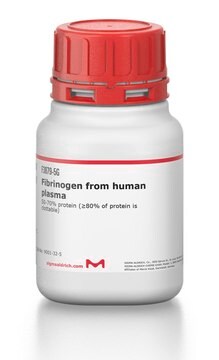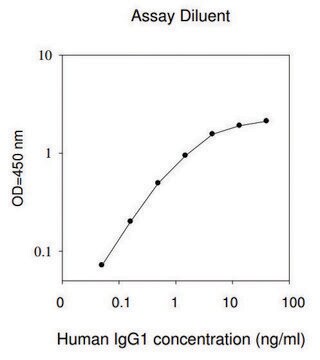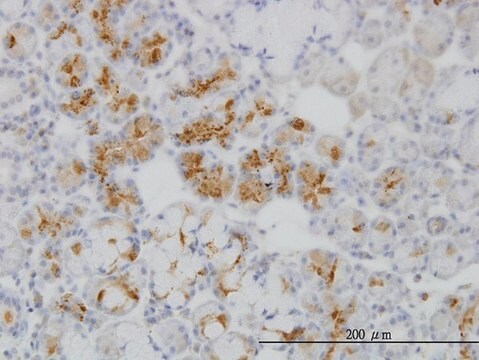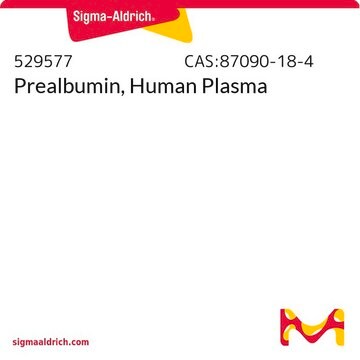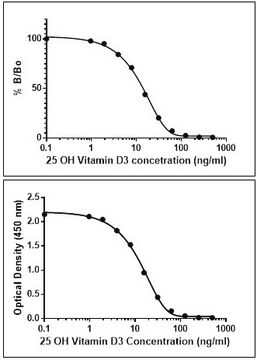R9388
Retinol Binding Protein from human urine
buffered aqueous solution
Sinonimo/i:
CRBP, Cellular retinol binding protein, RBP, RBP-1, Retinol Binding Protein I
About This Item
Prodotti consigliati
Origine biologica
human urine
Livello qualitativo
Saggio
≥85% (SDS-GE)
Forma fisica
buffered aqueous solution
tecniche
cell culture | embryo: suitable
transfection: suitable
N° accesso UniProt
Condizioni di spedizione
dry ice
Temperatura di conservazione
−20°C
Informazioni sul gene
human ... RBP1(5947)
Descrizione generale
Applicazioni
- as one of the protein in microinjecting mesencephalic cavity of chicken eggs to monitor embryonic cerebrospinal fluid/embryonic serum protein transfer
- as an additive in basal medium for RNA transfection experiments
- in the antibody-derivatized affinity pipettes preparation for the capture of affinity proteins
Azioni biochim/fisiol
Stato fisico
Codice della classe di stoccaggio
10 - Combustible liquids
Classe di pericolosità dell'acqua (WGK)
WGK 2
Punto d’infiammabilità (°F)
Not applicable
Punto d’infiammabilità (°C)
Not applicable
Dispositivi di protezione individuale
Eyeshields, Gloves, multi-purpose combination respirator cartridge (US)
Certificati d'analisi (COA)
Cerca il Certificati d'analisi (COA) digitando il numero di lotto/batch corrispondente. I numeri di lotto o di batch sono stampati sull'etichetta dei prodotti dopo la parola ‘Lotto’ o ‘Batch’.
Possiedi già questo prodotto?
I documenti relativi ai prodotti acquistati recentemente sono disponibili nell’Archivio dei documenti.
Il team dei nostri ricercatori vanta grande esperienza in tutte le aree della ricerca quali Life Science, scienza dei materiali, sintesi chimica, cromatografia, discipline analitiche, ecc..
Contatta l'Assistenza Tecnica.

